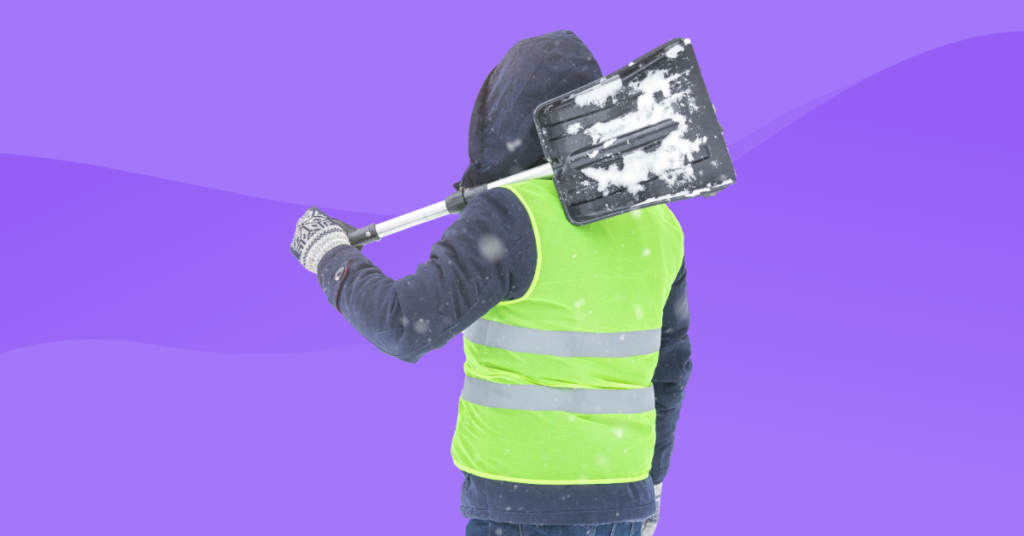With winter fast approaching, OSHA (Occupational Safety and Health Administration) has reminded employers to take necessary steps to protect their employees from cold-related illnesses and injuries when working in cold conditions.

In this blog post, we will discuss what these steps are, why they are important, and how employers can ensure compliance with OSHA regulations.
The Dangers of Working in Cold Conditions
According to the CDC (Centers for Disease Control and Prevention), exposure to cold temperatures can cause serious health problems. These include:
- Frostbite
- Hypothermia
- Trench foot
- Chilblains- itchy, swollen, and painful lumps or patches on the skin
- worsening of existing conditions such as asthma and heart disease.
In extreme cases, exposure to cold can even result in death. Employers must take necessary precautions to protect their employees from these dangers.
OSHA’s Regulations on Cold Stress
Under the Occupational Safety and Health Act of 1970, employers are responsible for providing their employees a safe and healthy workplace.
This includes protecting them from cold stress. OSHA has outlined specific regulations in its General Industry Standard (29 CFR 1910.132 (h)(4)) that employers must comply with to ensure the safety of their employees.
Federal OSHA regulations (29 CFR 1910.132(h)(4)) do not stipulate that employers need to pay for ordinary weather protection clothing such as winter coats, gloves, hats, jackets, or raincoats.
However, employers must provide specialized work gear, such as lined fire-resistant jackets or insulated nitrile work gloves. In some states, laws mandate employers to provide any equipment required for work.
Appropriate Attire & PPE for Cold Weather Conditions
A critical aspect of OSHA’s regulations is the requirement for employers to provide and ensure the use of personal protective equipment (PPE) when working in cold environments.
Insulated clothing, gloves, and footwear can make up PPE. Individuals should properly fit and regularly maintain them to protect against cold temperatures.
OSHA’s recent guidelines underscore employers’ obligations to guarantee their employees’ safety against the cold, emphasizing the need for appropriate winter attire for indoor and outdoor employees exposed to cold.
Underlining the significance of dressing appropriately to prevent cold stress, OSHA advises the use of:
- at least 3 layers of loose clothing for better insulation
- an insulated coat or jacket
- a knit mask to cover the face and mouth (when necessary)
- a hat covering the ears
- insulated gloves (waterproof if necessary)
- insulated and waterproof boots
Constrictive clothing is not advised as it can restrict blood circulation; warmth must be able to reach extremities.
Cold Safety Tips & Prevention Strategies
In addition to providing PPE and proper training, OSHA recommends useful cold weather safety tips and prevention strategies to reduce the risk of cold stress.
- Employers should ensure that their workers are familiar with the symptoms of cold stress.
- Everyone in the workplace should monitor their physical conditions and their colleagues.
- It is crucial to keep dry, as moisture can accelerate heat loss. It’s advisable to keep extra clothes on hand for changing if wet and to drink warm, sweetened fluids (non-alcoholic).
- Workers should effectively utilize engineering controls, safe work practices, and personal protective equipment their employers provide.
- Frequent breaks in warm areas, limiting exposure time to cold temperatures, and scheduling work during the warmest part of the day are also advised.
Employers should educate their workers on the dangers of working in the cold, signs and symptoms of cold-related illnesses, how to properly use PPE and procedures for seeking medical assistance in case of an emergency.
Employees should also be trained to identify potential hazards and risks associated with working in cold environments.
An emergency plan should be in place in case a worker experiences cold stress or other related illnesses. Employees who show signs of these illnesses should seek immediate medical attention.
Prepping for the Cold Conditions Ahead
As the winter season approaches, employers must prioritize their employees’ safety and well-being in cold environments.
By following OSHA’s regulations, providing proper training and education, implementing prevention strategies, and being aware of the signs and symptoms of cold-related illnesses, employers and employees can work together to prevent the dangers of cold stress.
Axiom Medical stands ready to help you prepare your team for the cold weather ahead with crucial education and injury and illness management through first aid treatment.
Don’t let the season’s chill catch you off guard – equip your team with the knowledge they need to prevent cold injuries and illnesses. Download our free Cold Injuries & Illness Card to help prevent cold injuries and illnesses before they happen.
Get your free Cold Injuries & Illness Card now and protect your most valuable asset – your employees.
Charli Pedersen is a published writer featured on Axiom Medical’s blog. She holds a bachelor’s degree in English, Professional and Technical Writing, and has experience creating content for businesses and non-profit organizations.










